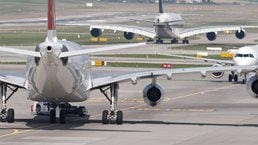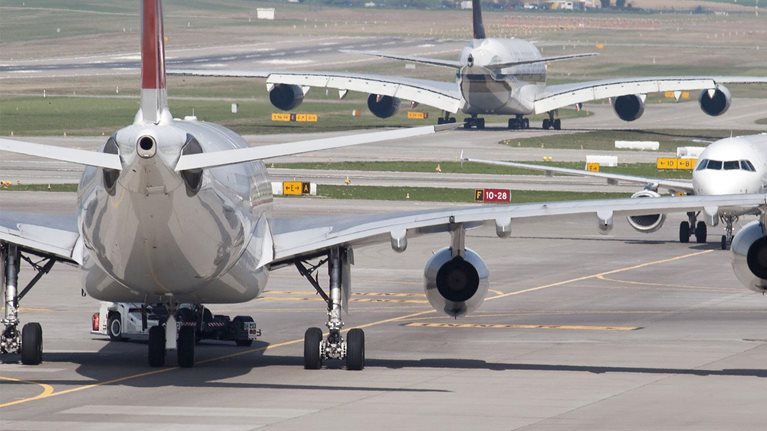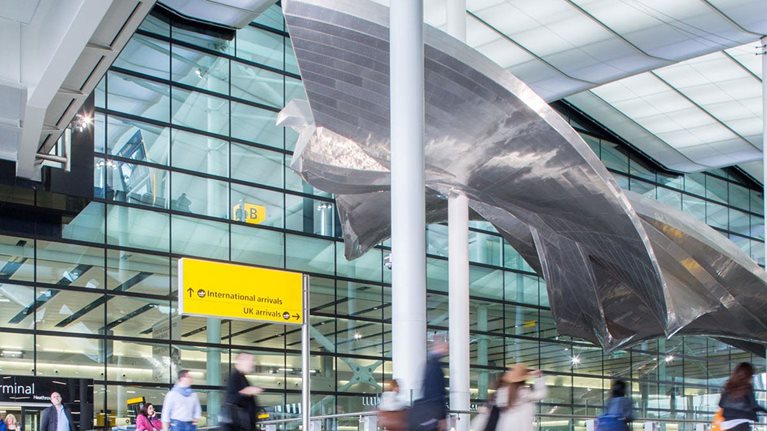Heathrow Airport handled more than 75 million passengers and 470,000 aircraft movements in 2016. But its two runways are crowded. Since at least the early 1970s, studies have suggested expanding the airport. Last October, the British government gave its approval, and this year Parliament will vote on the project. Planning approval will take an estimated four years and construction another five. When it is finished, the new runway and the associated projects will transform Europe’s largest airport. In this interview with McKinsey, Emma Gilthorpe, executive director, expansion, discusses the challenges of delivering and financing the £16 billion expansion plan.
Stay current on your favorite topics
Gilthorpe joined Heathrow in September 2009 as regulatory director. She later became strategy director, and was appointed to her current position in January 2017. She was previously BT Group’s director of industry policy and regulation and has held a number of other senior regulatory and public-policy roles.
McKinsey: What needs to happen this year to keep the third-runway project on course?
Emma Gilthorpe: Having announced its support for a third runway, the British government is consulting stakeholders on plans for the airport expansion. A final vote is expected in Parliament this year, which will set out the policy framework and mitigation measures.
In parallel, Heathrow will launch its own phase-one consultation to gather feedback on options for the northwest-runway scheme. This will form the basis of a preferred master plan, which will then be refined during a phase-two consultation in the summer of 2018. A final planning application is expected to be submitted in the summer of 2019, with a final decision in 2020.
McKinsey: This project has been under consideration for decades, and it is controversial, for environmental, social, and political reasons. How is Heathrow working to deal with them?
Emma Gilthorpe: Heathrow has a strong track record of delivering major infrastructure projects. Indeed, over the past decade, the airport has been transformed by an £11 billion private-investment program. The runway project will build on this success.

Gridlock on the ground: How airlines can respond to airport congestion
We’ve created a program team to respond directly to each challenge. For example, I have a direct report who is responsible for ensuring that we’re building an airport fit for future passengers. Another leads the planning process related to environmental mitigation. I also have someone responsible for delivering on our promises to local communities, and someone else works directly with our biggest customers to ensure we’re delivering expansion affordably. One of the team works to create a supply chain capable of exploiting this investment opportunity and to keep the project on time and on budget. Finally, I have a direct report responsible for developing skills and leaving a world-class legacy for future generations.
This is an experienced leadership team with its eye on every aspect of Heathrow’s expansion plans. It’s what we’re good at. The country is counting on us to succeed, and I’m confident we’ll deliver.
McKinsey: Why is expansion necessary?
Emma Gilthorpe: Expanding Heathrow will keep Britain at the heart of the global economy. When it opens in 2025, the new hub capacity will connect Britain to more than 40 new long-haul destinations in fast-growing markets across the globe, making Britain the best-connected country in the world. It will also double the number of domestic routes served and ensure that every part of the United Kingdom can access global markets.
McKinsey: Does the Brexit vote affect the case for expansion?
Emma Gilthorpe: Heathrow is Britain’s largest port; it’s a fundamental plank in the nation’s trading infrastructure. Every year, more than £100 billion worth of goods travel through the airport right underneath passengers’ feet in the cargo holds of aircraft. An expanded Heathrow secures our existing trading routes, opens up new long-haul destinations, and gives Britain a competitive position from which to increase trade. To secure this opportunity sooner, from 2021, we are looking to add 25,000 more annual “Brexit Boost” flights on our existing runways—four years before a new runway opens. We anticipate we can squeeze out the extra capacity on our existing runways through a variety of operational measures and additional investment.
McKinsey: When do you expect the third runway and the rest of the projects to be operational?
Emma Gilthorpe: Aircraft will be taking off and landing from Heathrow’s third runway in 2025. We will take a phased approach to building additional terminal capacity and other facilities to match passenger demand.
McKinsey: How will Heathrow finance the £16 billion expansion project?
Emma Gilthorpe: We will finance expansion in the same way we financed previous capital programs, through a mixture of debt and equity rather than as a separate project. Each year, we raise hundreds of millions of pounds in cost-efficient debt, in six different currencies, in both public and private markets.
McKinsey: What mechanisms will there be to keep to the budget and time schedule?
Emma Gilthorpe: We’ve taken a two-pronged approach. First, we’ve established a full governance mechanism that provides a line of sight from the Heathrow board right down to individual projects. Second, we’ve established a monthly management status review that will monitor how the program is delivering against key cost and time metrics so that we can take early action if needed.
McKinsey: Heathrow has recently completed major projects at Terminals 2 and 5. What approaches will you adopt on the expansion project, with respect to financing and delivery?
Emma Gilthorpe: Our program delivery model for expansion is very much a combination of the ones we used for those projects.
One direct result of our previous experience is to ensure that one member of the leadership team has a strong operations background. We build with the end in mind. That means that from day one the facilities must be efficient and easy to operate. The “operator” on the team holds the golden thread—from planning through construction to operational readiness—and keeps us focused on that end point.
While our financing plan is more of what we have already successfully done, we would expect that the scale of the expansion project will allow us to raise money in new areas. That could include increasing our profile in the United States and issuing securities in new currencies, such as the Australian dollar, which is known to be infrastructure friendly.
The sheer scale of the development is also something that we’re planning for. We are “modularizing” the design to build as much as we can off-site. We will then transport elements to Heathrow using the UK’s rail network. This will accelerate construction and increase quality; it is also more cost effective. And because there will be fewer vehicle movements, the environmental impact is reduced.
McKinsey: How will you ensure that work on the expansion does not undermine existing operations?
Emma Gilthorpe: We know our airport, and we know that building in a working facility requires close collaboration with the operations and development directors. Our recent Terminal 2 project was a perfect example. The Queen’s Terminal was built between the world’s two busiest runways and did not result in a single operational stoppage. In some ways, the new runway will be easier, because it is situated to one side of the existing airport’s footprint.


